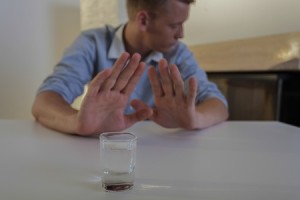More Harm Than Good with Baclofen

In October of 2018 French health authorities approved the use of a muscle relaxant known as baclofen as a medication-assisted treatment (MAT) for alcoholism. In the U.S., it is approved to treat muscle spasms caused by conditions such as multiple sclerosis or spinal cord injuries. But a French-American cardiologist names Olivier Ameisen self-treated his own compulsive drinking with high doses of baclofen and then wrote a book about his experiences: The End of My Addiction. His reasoning behind the book title was that since baclofen stopped his symptoms of craving and obsessing over alcohol, he was “cured” of alcoholism.
I wrote a three-part article, “The End of Alcoholism? “ (Part 1, Part 2, Part 3), about Ameisen and his use of baclofen as a MAT for alcoholism three years ago. Read that article for more information on Ameisen and his so-called “cure.” My primary concern discussed then was the known withdrawal syndrome related to baclofen use. Similar to medications used to “treat” opioid use disorders (buprenorphine and methadone) and anxiety or panic attacks (benzodiazepines like: Ativan, Klonopin, Xanax) the physical and psychological dependency that develops is a hidden adverse effect. The medications work so effectively that the growing dependency is either minimized or goes unnoticed. Only when and if the individual attempts to taper off of the drugs do people realize what has happened.
The Prescribers’ Digital Reference warns that confusion, hallucinations, seizures and other psychiatric disturbances have occurred with abrupt discontinuation (withdrawal) of baclofen. They recommended a gradual reduction over 2 weeks or more. Listed severe adverse reactions included: coma, stroke, seizures, suicidal ideation, and others. Milder and more frequent adverse reactions included: drowsiness, weakness, dizziness, headache, and others. There is a very long list of noted drug interactions, many of which are CNS (central nervous system) depressants like benzodiazepines and opioids.
The Medical Xpress press release announcement of France’s approval of baclofen did indicate officials warned the drug could have harmful side effects and limited its maximum recommended dosage to 80 milligrams. This was down from the 300-milligram dose that had been used previously by Ameisen and others. The French version of the U.S.’s FDA (ANSM) said that while there was not definitive proof baclofen was efficient in treating alcoholism, it has shown “clinical benefits in some patients.” The ANSM director said that refusing the drug “did not seem reasonable to us given the needs and the seriousness of alcoholism, and the fact that tens of thousands of people are taking the medicine for this treatment.”
In November of 2018 the British medical journal The Lancet published an editorial article by Agabio et al., “Baclofen for the treatment of alcohol use disorder: the Cagliari Statement.” The consensus statement was named after the town in Italy where the GABAB Receptor Conference was held on May 25, 2018. Agabio et al. said they believed baclofen was a “promising pharmacotherapy for alcohol use disorder, but it’s superiority over placebo has not been established yet.” More research needed to be done.
Despite the absence of consistent evidence of efficacy, baclofen is frequently used off-label to treat alcohol use disorder, especially in Australia and some European countries. The use of baclofen for clinical research and in medical practice varies substantially, because of differences in treatment provision for alcohol use disorder, clinical experience, and country-specific regulations and culture.
Three recently published meta-analyses were cited and commented on in “Baclofen for the treatment of alcohol use disorder: the Cagliari Statement.” Agabio et al. said the studies did not draw definitive conclusions on the efficacy of baclofen to treat alcohol use disorder. One meta-analysis (Bschor et al.) did not find baclofen to be superior over placebo on the primary outcomes of each study. The other two meta-analyses (Rose and Jones; Pierce et al.) found baclofen increased the number of abstinent patients and time to first drink when compared to placebo. “Chiefly, all three meta-analyses found overall a small effect size and substantial heterogeneity among studies.”
Bschor et al. found a small, but not statistically significant superiority of baclofen over placebo. They questioned the utility of baclofen in the long-term treatment of alcohol use disorder at both normal and high doses. “While the confidence intervals indicate that marginally harmful or moderately beneficial effects of baclofen remain a possibility, the most likely effect size is slightly above placebo effects.”
Rose and Jones said baclofen was associated with higher rates of abstinence than placebo. But there was no superior effect of baclofen on increasing the number of abstinent days or decreasing heavy drinking, craving, anxiety or depression. “These results suggest that the current increasing use of baclofen as a treatment for alcohol use disorders is premature.”
Commenting on her study for Healio, Abigail Rose said many of the trials in her study were under-powered. There were also differences in how the trials reported data on adverse events. “Although the most recent trials were larger and still failed to find an effect of baclofen. Importantly, we don’t yet fully understand baclofen’s pharmacokinetics and how this may have an impact on therapeutic effect.”
Pierce et al. found that low dose baclofen (LDB 30-60 mg) showed better efficacy than high dose baclofen (HDB >60 mg daily). Tolerability of HDB was low, but serious adverse events were rare. The effects of baclofen were stronger when daily alcohol intake was higher. “Baclofen seems to be effective in the treatment of AD, especially among heavy drinkers. HDB is not necessarily more effective than LDB with low tolerability of HDB being an import limitation.”
Naudet and Braillon reflected on Agabio et al.’s article in the same issue of The Lancet, “Baclofen and alcohol in France.” They said the promotion of the off-label use of baclofen was not appropriate, “especially when evidence points to a negative benefit:harm ratio.” They noted where the ANSM published an evidence-based assessment “from a Temporary Special Scientific Committee of independent experts who concluded that the benefit:harm ratio of baclofen in alcohol use disorder was negative.” After two days of public hearings, the ANSM concluded that it supported the use of baclofen in alcohol-dependent patients, but limited the marketing authorization for baclofen proposed in the application of Ethypharm Pharmaceuticals to France. Then on October 23, 2018 the ANSM approved the use of baclofen for alcohol use disorder.
This decision seems to ignore the evidence summarised by the Temporary Special Scientific Committee. Evidence opposing the use of baclofen includes findings from a pharmacoepidemiological study on 277,790 patients who were treated with baclofen between 2009 and 2015. Compared with 117,720 people who used the approved treatments for alcohol disorders (acamprosate, naltrexone, or nalmefene), the group of 47,614 people who were prescribed baclofen for an off-label use had higher mortality at any dose of baclofen. . . . Importantly, this increased risk was dose related.
Referring to the Bschor et al. and Rose & Jones studies, Naudet and Braillon said the finding that baclofen may increase abstinence was largely driven by two small, short-term studies, while the two largest trials failed to show that baclofen was effective. “No other effects on treatment efficacy were observed.” Further, the Temporary Special Scientific Committee focused on two relatively large randomized controlled trials of baclofen versus placebo. In the analyses for one of the studies submitted for baclofen’s approval by ANSM, Ethpharm changed the primary outcome measure. The results of this study are still unpublished in the peer-reviewed literature even though it was completed in October of 2015.
Preliminary results presented at conferences showed a two times increase in mortality in the baclofen group and that 19 of 162 patients in the baclofen group and 60 of 158 in the placebo group received open-label baclofen before the end of the study. Although the study was funded by the French Department of Health, the sponsor (Paris Public Hospital Authority) contractually transmitted data to Ethypharm. The analyses that were done for the purpose of approval were performed by Ethypharm, and the primary outcome was changed.
Replying to Naudet and Braillon on behalf of the Cagliari group, Agabio, Sinclair and Leggio said the Cagliari Statement did not promote the off-label use of baclofen. Rather, since the off-label use of baclofen happens, they wanted to provide “objective statements on the available evidence and clinical use of baclofen in alcohol use disorder.” They thought their statements could be useful to clinicians using baclofen for patients with alcohol use disorder and by scientists planning baclofen-related research in alcohol use disorder. Protecting patients’ safety was paramount and the recent pharmacoepidemiological work mentioned by Naudet and Braillon was important. “The Cagliari Statement highlights the risks related to baclofen use, emphasises that side-effects and safety concerns might be dose dependent, and provides several safety-related statements and recommendations.”
So despite the French approval of baclofen as MAT, it does not seem the FDA should also approve it for use in the U.S. market. In fact, it appears the benefit:harm ratio suggests baclofen would do more harm than good if approved as a MAT in the U.S.




